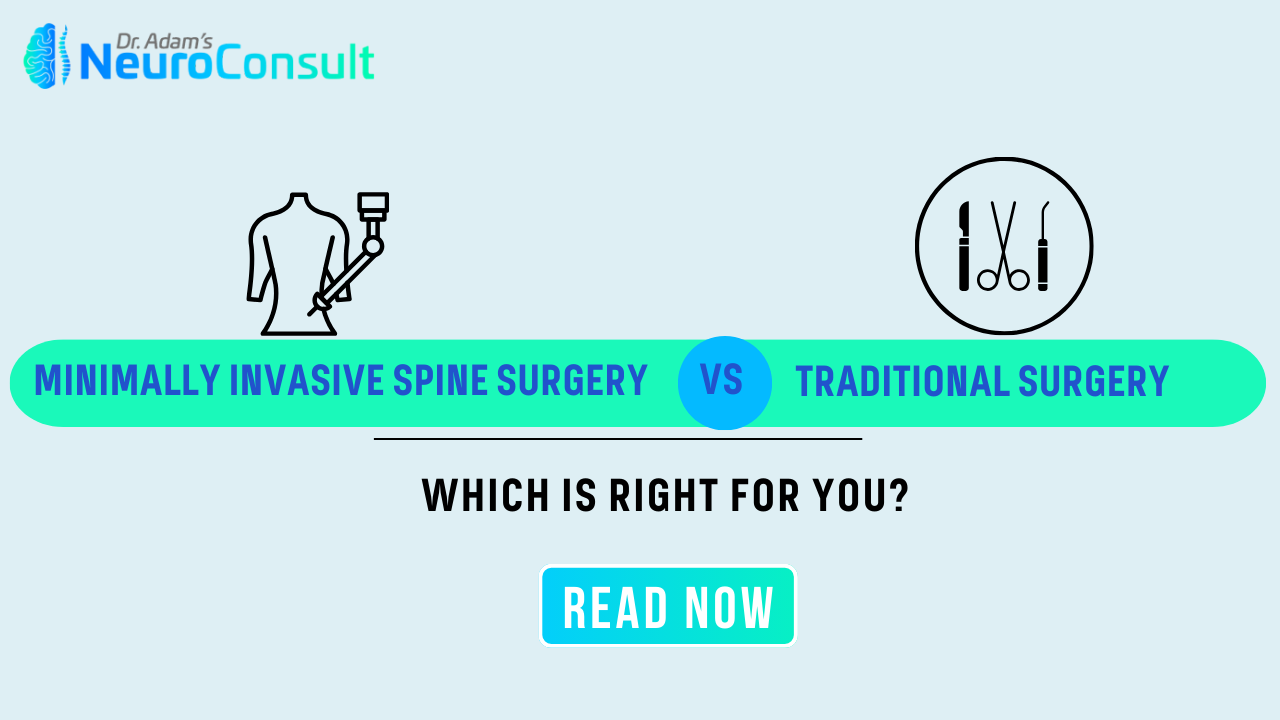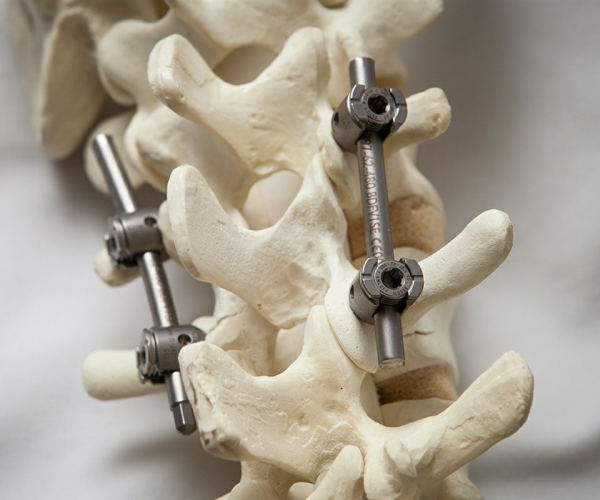
Minimally Invasive Spine Surgery vs. Traditional Surgery: Which Is Right for You?
Back and spinal issues are some of the most common causes of discomfort, significantly impacting quality of life. For those who have tried conservative treatments with limited success, spine surgery may become a necessary option. With advancements in medical technology, patients now have the option to choose between traditional (open) spine surgery and minimally invasive spine surgery (MISS). Understanding the differences, benefits, and risks associated with each type of surgery can help you make an informed decision on the best course of treatment.
What Is Traditional Spine Surgery?
Traditional spine surgery involves an open approach where a long incision is made along the spine, giving the surgeon a full view of the spinal structures. This allows for the direct visualization and access necessary to treat complex conditions. In traditional spine surgery, the surgeon often removes muscle tissue or bone to reach the affected area. While this approach can be effective, it is associated with more significant muscle and tissue damage, resulting in a longer recovery period.
Common Conditions Treated with Traditional Spine Surgery:
- Complex spinal deformities
(e.g.,
scoliosis)
- Large herniated discs
- Severe spinal stenosis
- Tumors and infections in the
spine

What Is Minimally Invasive Spine Surgery?
Minimally Invasive Spine Surgery (MISS) is a modern surgical technique that uses smaller incisions and specialized tools to access the spine with minimal disruption to surrounding tissues. This approach is particularly beneficial for patients with less complex spinal issues. Using advanced imaging techniques, such as fluoroscopy, the surgeon can navigate the spine through small incisions, often without cutting through muscles or large amounts of tissue. This leads to reduced scarring, lower blood loss, and a faster recovery.
Common Conditions Treated with MISS:
- Herniated discs
- Spinal stenosis
- Degenerative disc disease
- Certain types of spinal fractures
Benefits of Minimally Invasive Spine Surgery
-
Smaller Incisions
The incisions used in MISS are generally less than an inch long, minimizing scarring and promoting faster healing.
-
Reduced Blood Loss
With less tissue disruption, MISS typically involves minimal blood loss, decreasing the risk of complications during and after surgery.
-
Shorter Hospital Stay
Patients who undergo MISS often experience a shorter hospital stay, sometimes even going home the same day.
-
Faster Recovery Time
MISS patients tend to have a quicker recovery, returning to daily activities within weeks rather than months.
-
Less Postoperative Pain
Since there is less tissue damage, MISS often results in less postoperative pain, reducing the need for pain medications.
Advantages of Traditional Spine Surgery
While MISS offers many benefits, traditional spine surgery still has its place in modern medicine. It remains the gold standard for treating complex spinal issues that require extensive surgical intervention. Some cases may require traditional surgery for a successful outcome, especially when there is a need for precise, in-depth work that is difficult to achieve with minimally invasive techniques.
Key Benefits of Traditional Spine Surgery:
- Direct Visualization: The open
approach
provides direct visualization of spinal structures, which can be critical in complex
cases.
- Comprehensive Access: Traditional
surgery
allows surgeons to address larger areas of the spine, making it effective for major
spinal deformities or tumor removal.
- Reliability: For conditions like
severe
scoliosis or large spinal tumors, traditional spine surgery offers the most
dependable
results.
Comparison of Risks: Minimally Invasive vs. Traditional Spine Surgery
Both traditional and minimally invasive spine surgeries carry some risks. However, the risk profiles differ:
Traditional Surgery Risks:
- Higher blood loss
- Longer recovery
- Increased postoperative pain
- Greater likelihood of infection due to
larger incisions
MISS Risks:
- Nerve damage
- Limited access to complex spinal
issues
- Potential need for follow-up
surgery if
the issue cannot be fully resolved through the minimally invasive approach
- Nerve damage
- Limited access to complex spinal issues
- Potential need for follow-up surgery if the issue cannot be fully resolved through the minimally invasive approach
Recovery Times: What to Expect
Recovery from traditional spine surgery generally takes several months, with most patients needing physical therapy to regain strength and flexibility. Recovery from MISS, on the other hand, is often quicker, allowing patients to return to light activities within a few weeks and full activity within 3-4 months. However, the exact recovery time for either procedure will depend on the patient's condition, age, and overall health.
Choosing the Right Surgery for You
Determining whether minimally invasive or traditional spine surgery is right for you depends on several factors, including the complexity of your condition, your lifestyle, and your overall health. Here’s a simplified guide:
Traditional Spine Surgery May Be Right for You If:
- You have a complex spinal deformity or
structural abnormality.
- You need a larger area of the spine
addressed (e.g., for scoliosis or large tumor removal).
- You have not responded well to
previous
surgeries or conservative treatments.
Minimally Invasive Spine Surgery May Be Right for You If:
- Your condition is localized and
less
complex (e.g., herniated disc, mild spinal stenosis).
- You want a faster recovery with
less
postoperative pain.
- You prefer a minimally scarring
procedure.
- Your condition is localized and less complex (e.g., herniated disc, mild spinal stenosis).
- You want a faster recovery with less postoperative pain.
- You prefer a minimally scarring procedure.

Dr. Adam Kamrudeen
Neurosurgeon in Navi Mumbai
- MBBS, MS – General Surgery,
- MCh – Neuro Surgery
- Brain & Spine Surgeon in Navi
Mumbai
Conclusion
Consulting with Dr. Adam Kamrudeen, a skilled neurosurgeon in Navi Mumbai, is crucial if you're dealing with spondylosis. This degenerative condition of the spine can cause significant pain and mobility issues. Dr. Adam Kamrudeen will assess your condition and explain the surgical and non-surgical treatment options available, including minimally invasive techniques to relieve pain and restore function.
If you’re experiencing back pain or other spinal issues, don’t wait for your condition to worsen. Dr. Adam Amrudeen can provide a comprehensive evaluation, discuss your options, and help you make an informed decision on whether minimally invasive or traditional spine surgery is best for you. Schedule a consultation with Dr. Amrudeen to take the first step toward a healthier, pain-free life.
